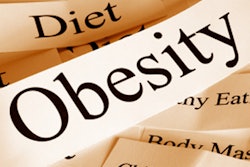
Interventional radiology has a rising profile as a viable alternative to open surgery for an expanding range of clinical applications. But as the field grows, its biggest challenge becomes getting the word out to patients in a healthcare landscape dominated by turf issues and entrenched interests.
These issues are on the minds of thousands of interventional radiologists who are convening April 2-7 in Vancouver, British Columbia, for the Society of Interventional Radiology (SIR) annual scientific meeting. In a preconference press briefing, interventional radiologists and SIR officials shared a few of the highlights of SIR 2016.
UFE improves quality of life
Researchers in France wanted to learn the impact of uterine fibroid embolization (UFE) on the quality of life of women with uterine fibroids, a condition that's not life-threatening but can be painful and lead to symptoms such as heavy menstrual bleeding. Fibroids often affect younger women, and the standard surgical treatment, a hysterectomy, can leave these women unable to have children.
Interventional radiology gives hope to these patients, relieving their symptoms while preserving their reproductive abilities through embolization, in which plastic particles are injected into an artery to block or restrict the blood supply. When applied to the uterine artery, this can cause fibroids to shrink.
In a paper presented on April 3, researchers led by Dr. Helene Vernhet Kovacsik discussed their work in surveying the attitudes and outcomes of women who received UFE at 25 centers across France.
The prospective study included 264 women who underwent UFE treatment for benign fibroid growth. The women were asked to complete surveys on quality of life before and one year after treatment, and they were also asked to complete a questionnaire on female sexual function.
The researchers found that at the beginning of the study, 189 of the 264 women had abnormally heavy menstrual bleeding and 171 experienced pain and other symptoms associated with pelvic pressure. A year after UFE treatment, only 39 of the 189 women had abnormal bleeding, and 42 of the 171 patients still had pelvic pressure.
With respect to sexual function, 78.8% of the women reported improvements in sexual function, while 90.2% reported a better overall quality of life. Women said they did not feel as tired and were less depressed because of the reduction in bleeding, pain, and other symptoms related to uterine fibroids, according to study co-author Dr. Marc Sapoval, PhD.
The research presented at SIR 2016 is just the latest in a number of studies that have demonstrated the effectiveness of UFE, although its focus on sexual function was somewhat novel, Sapoval said. But despite UFE's proven usefulness, many women still don't know it's a viable option and often proceed to hysterectomy -- a situation that persists in both France and North America.
Only 10% of the women eligible for UFE treatment actually get it, according to Dr. Robert Vogelzang, an interventional radiologist at Northwestern University and past president of SIR.
"Here in America, UFE, although 20 years old, has still not achieved the success or widespread use it should," Vogelzang said in an SIR press conference. "Sadly, the patients who have fibroids are often not being told about embolization, and that needs to be addressed in a specific way."
Prostatic artery embolization
What's good for the goose can be good for the gander. Attendees at SIR 2016 are also learning about another application for arterial embolization, this time for men with enlarged prostates, or benign prostatic hyperplasia (BPH).
Men with this condition experience a diminished quality of life, getting less sleep because they have to get up frequently in the night to urinate, a condition known as nocturia. Conventional treatments for enlarged prostate often don't address nocturia.
Enter prostatic artery embolization (PAE). The procedure is somewhat similar to UFE, although in this case a catheter is inserted and guided to the prostate artery on both sides of the enlarged prostate gland, where it delivers microscopic spheres that block blood flow and cause the prostate to shrink.
Researchers from the Vascular Institute of Virginia wanted to analyze prostatic artery embolization's effect on quality of life in men who received the procedure for BPH. They performed a retrospective study of 68 men who received PAE at the institute as well as at the University of North Carolina at Chapel Hill. They asked the patients about quality of life and asked them to rate the severity of their symptoms, according to lead researcher Dr. Sandeep Bagla of the institute.
Before treatment, patients reported a symptom severity score of 23.9 out of 35 (higher is worse) on the American Urology Association (AUA) scale. They also reported a quality-of-life score of 4.8 out of 6 (higher is worse). The men reported having to get up to urinate an average of 3.3 times per night.
One month after PAE treatment, the researchers were able to follow up with 46 patients, who reported a 10-point drop in AUA scores and a quality-of-life improvement of 2.1 points. Also, 25 of the 46 patients reported an absolute average reduction in nocturia of 0.85 episodes per night.
The benefits of PAE grew over time. At the three-month follow-up mark, 28 of 38 patients had an average reduction in nocturia episodes of 1.4 per night. There was also a 13.4-point reduction in AUA scores and a 2.8-point improvement in quality-of-life scores.
Weight-loss treatment
While embolization of the uterine and prostatic arteries has been around for years, SIR 2016 attendees also heard in an April 3 presentation about a new use of the technology: as a weight-loss treatment.
The technique is called bariatric arterial embolization (BAE), and researchers who performed a pilot study believe it could offer an alternative to open bariatric surgery, without the complications.
BAE targets a section of the stomach called the fundus, which is the production center for ghrelin, the body's most powerful hunger hormone. As with UFE and PAE, interventional radiologists direct image-guided catheters to blood vessels feeding this part of the stomach, and decrease blood flow with microscopic beads. This leads to suppressed hunger signals and subsequent weight loss.
A team from Johns Hopkins University led by Dr. Clifford Weiss tested BAE in seven adults who were severely obese -- but otherwise healthy -- in a study called Bariatric Embolization of Arteries for the Treatment of Obesity (BEAT Obesity). All had body mass index (BMI) scores ranging from 40 to 60, well above the 30 threshold for obesity.
Study participants enrolled in the Johns Hopkins Weight Management Center, which helped them implement lifestyle and diet changes before and after the BAE procedure. The researchers then tracked aspects of the subjects' lives such as weight loss, ghrelin levels, quality of life, and adverse events, among other factors.
The researchers found that BAE participants lost an average 5.9% of excess weight in the first month after the procedure. After six months, their excess-weight loss increased to an average of 13.3%.
Importantly, the study showed that bariatric embolization was safe, with no major adverse events reported. Ghrelin levels went down, and quality-of-life scores improved.
The researchers noted that bariatric arterial embolization is still in its early stages. More research studies are needed to evaluate larger numbers of patients to determine the efficacy of the treatment and its durability over time.



















